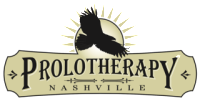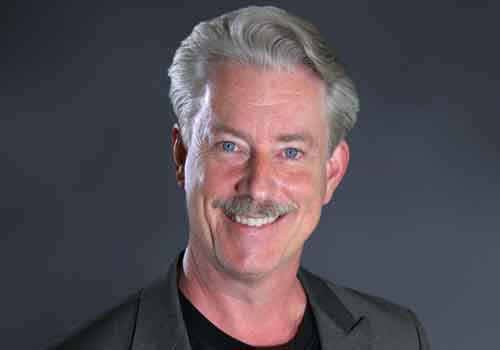JOINT REPLACEMENT ALTERNATIVE
PROLOTHERAPY / PRP TREATMENT
For the most recent year that statistics are available, the cost of hip and knee replacements in the US was 17 billion dollars. So severe joint pain and deterioration is a frequent personal occurrence, and a vast public health and medical economic problem.
I want to highlight three issues here: 1.) A generally incorrect series of assumptions about how the damage develops in a joint that leads to joint replacement; 2.) Where symptoms in these joints are actually coming from, and how triggering healing (with Prolotherapy, PRP, and/or stem cells) in these particular structures can remedy the symptoms, and the underlying condition, perhaps better than the ‘standard’ treatment—partial or total joint replacement; and 3.), why even a strategy of ‘triggering healing’, which has been the sole domain of Prolotherapists until recently, but is now being pursued by Orthopedic surgeons who use Platelet Rich Plasma, as well as by various ‘stem cell’ centers, does not guarantee excellent results. The results obtained by triggering healing are highly variable (as cited research studies, and my own results will demonstrate), and the factors which make the largest difference in results will be highlighted.
The typical Orthopedic of family doctor description of a badly damaged and painful joint is that ‘arthritis’ (joint inflammation) has eaten the cartilage, and now ‘bone on bone’—loss of cartilage—is causing the pain. Based upon these assumptions, such physicians will initially treat joint pain with anti-inflammatory medications—oral first, like Aleve, Ibuprofen, Mobic or Celebrex—then corticosteroids, often by direct injection. Then, when these are not providing adequate pain relief, partial or total ‘joint replacement’ is recommended, where one or both of the joint surfaces are removed and replaced with metal or plastic. While these operations are often implied to be the ‘magic bullet’ that will fix all the problems, many patients continue to have pain and activity limitations following these operations, and occasionally more serious complications result in much more serious ongoing pain and activity limitations.
Is there a viable alternative strategy? Yes, and it starts with a completely different understanding of what is wrong in the first place. I am going to do something very different now than you will see on any other website. Instead of simply offering my opinion, as everyone else is doing, I am going to show you results of my own treatment, and some current research results. Then I am going to explain why those very different results are obtained—by Orthopedic surgeons, other Prolotherapists, and myself.
 The Orthopedic concepts about ‘what is wrong’ go back a set of concepts developed in the 1950’s about ‘inflammation’ causing tenderness and pain in joints and surrounding connective tissue structures. These concepts grew from observing that patients who received Cortisone…the first ‘anti-inflammatory’ medication ever developed…often noted improvement in aches and pain in their necks, backs, and joints after receiving cortisone. These structures and joints were thought to have, prior to the mid-1950’s, connective tissue damage causing pain in the supporting structures of the joints—the ligaments and tendons, and in these same structures in backs and necks. It turns out that the initial idea about this problem was the correct one, and the ‘inflammation’ idea was misguided…but it took medical scientists 50 years, until the turn of the 21st century, to investigate, and disprove, the ‘inflammation’ idea. So, what is actually going on in joints that are painful and tender, with or without x-ray evidence of cartilage loss? And why might triggering a patient’s healing system be a better choice for treating such joint pains and damage?
The Orthopedic concepts about ‘what is wrong’ go back a set of concepts developed in the 1950’s about ‘inflammation’ causing tenderness and pain in joints and surrounding connective tissue structures. These concepts grew from observing that patients who received Cortisone…the first ‘anti-inflammatory’ medication ever developed…often noted improvement in aches and pain in their necks, backs, and joints after receiving cortisone. These structures and joints were thought to have, prior to the mid-1950’s, connective tissue damage causing pain in the supporting structures of the joints—the ligaments and tendons, and in these same structures in backs and necks. It turns out that the initial idea about this problem was the correct one, and the ‘inflammation’ idea was misguided…but it took medical scientists 50 years, until the turn of the 21st century, to investigate, and disprove, the ‘inflammation’ idea. So, what is actually going on in joints that are painful and tender, with or without x-ray evidence of cartilage loss? And why might triggering a patient’s healing system be a better choice for treating such joint pains and damage?
Before I tell you what I think, let me tell you the results that I get in treating such patients. There are a vast array of theories about ‘what is wrong’ in the patients that I treat, and patients often want to regale me in the office with ‘everything’ that they have heard is wrong with them. My answer to them, in the interest of not wasting time in a conversation about what has not worked, is to simply point out that, unless someone has taken their notion about ‘what is wrong’ and used it to remedy the problem, I am not particularly interested in what they think is wrong. I have taken two large groups of my patients and carefully studied my results in those patients. I did this in order to present accurate results of the diagnostic and treatment techniques that I teach in national physician meetings, and in order to refine my own approaches to various problems in my own patients. I found that my results in various joints are very similar throughout the body, so we have the ‘same problem’ that responds in the ‘same way’, no matter which joint or area we are considering. In a recent conference, I discussed my ‘body wide’ results, but focused on results in knees (this presentation, and these results, may be viewed under the ‘for medical professionals’ section). In this presentation I matched my results in knees against the two best research studies on the ‘healing triggering’ strategy —an Orthopedic surgeon, using the Orthopedic diagnostic assumptions to target a ‘healing triggering’ approach’—Platelet Rich Plasma, and the best published research study to date on use of Prolotherapy in knees.
So, let us first take a look at the very different results that were obtained even using the same basic approach—an attempt to trigger healing—in the hands of an Orthopedic surgeon, in the hands of two respected Prolotherapy physicians, and in my hands. (These results are presented and analyzed in much greater detail in my video presentation—here I will mention only the highlights. Please see the presentation also if you are interested in this topic.) The Orthopedic surgeon, based upon ‘Orthopedic thinking’ (assuming that the ‘problem’ was ‘arthritis-induced bone on bone’), naturally attempted to trigger healing only in the cartilage surfaces, by simply injecting the healing triggering solution into the joint space—if the cartilage damage can be healed, problem solved..right? In 50 patients, she got an average 40% symptom reduction after three Platelet Rich Plasma treatments. In the patients with the ‘worst’ x-ray findings (‘severe’ osteoarthritis, where joint replacement would generally also be recommended), most of the symptom improvement was gone within a year. Did Dr. Evangilista Kon fix the problems in these joints with her treatment strategy?
Now let us look at the second study, conducted by Drs. Jeffery Patterson and David Rabago. They also looked at 50 patients with painful knees (x-ray ‘severity’ not defined). In addition to injecting in the joint space, as Dr. Kon had done, they also examined the patients, and injected healing-triggering solution (Prolotherapy) in tender ligament and tendon structures around the knee. Employing up to five such treatments, they found improvement between 50% and 65% in pain and activity limitation. At one year, these results were maintained. Did they get better results that the ‘Orthopedic results’, even using a ‘less strong’ healing system trigger—Dextrose? Yes. Their results were better, and more long-lasting. But did they fix the real problem in these knees? Only to a point. So, is there a problem in these knees that Prolotherapy cannot address at all, or is Prolotherapy a potentially fully effective treatment what was simply being incompletely utilized? To answer that question, let us look at my results and briefly discuss why I get those results.
I looked at two large groups of my own patients—100 consecutive new patients, and 126 patients, in two different years. The results described were from one year or more following the last treatment. In these two groups there were 27 and 28 knees, or 55 total. In this combined group, 40% of the knees had joint replacement recommended, and 10% had an arthroscopic procedure recommended. So 50% of my patients were operative candidates, mostly due to ‘severe arthritis’, but also to meniscal tear, etc. In patients who completed a course of treatment (which was almost all of them), 95% got at least 80% symptom relief, and 45% got 100% relief of symptoms. When I looked at the 19 knees where joint replacement had been recommended, surely the results could not be that good in this group, could they? In fact, in this group we had 90% with over 80% symptom relief and 35% with no remaining symptoms at all. Put another way, in these patients, if we could get the healing system to ‘trigger’ (which was the problem in the 10% of knees which did not get dramatic symptom relief—these represented two knees…in the same patient…in whom we simply could not adequately trigger the healing response strongly enough to get the job done…while everyone else we treated had their ‘bad knee’ become their ‘good knee’). And remember how the Orthopedic approach produced transient symptom relief—mostly gone within a year? How about in my patients? First, the above results were obtained one year following treatment. But we did one more thing…we found as many people as we could in this group four years following treatment. What do you think we found four years out? Absent a specific re-injury, we had more people with 100% pain relief four years after treatment than we had at one year. What does this mean? It means that these knees continued to further repair themselves in the years following treatment. What does that mean? It appears to mean that I corrected the underlying dynamic that allowed these knees to deteriorate to begin with. And what was it that actually caused the deterioration seen on x-rays?
The underlying problem causing this damage is ligament stretch and elongation. One or more ligaments are weakened when a certain number of collagen molecules are broken, and not replaced by the body’s healing system, so that these structures begin to stretch under typical body loads. Over time, this weakness lead to the ligaments stretching like an old rubber band that has lost its strength. I have yet to see a single person with significant cartilage loss in any joint who does not also have ligament ‘looseness’ in the joint. Rather than an inflammation ‘eating’ the cartilage, there are simply abnormal abrasive forces in the ‘loose’ joint that damage, and ultimately grind off the cartilage. Yet the MRI’s that often accompany patients do not generally note such ligament damage. Why? Because these ligaments usually look ‘normal’ on films. If so, how do I find this kind of damage when the Orthopedic surgeons miss this damage? I bother to look, while they do not bother because they assume that the ‘problem’ is inflammation. It is that simple. And how do I find these stretchable and elongated ligaments? First, there are simple and painless tests that can be done to show the ‘wiggle’ in the joint for some ligaments, like the ACL in the knee. Secondly, these ligaments stretchable and elongated ligaments are always tender when you press on them lightly.
One of the revolutionary concepts that Prolothrapy teaches us is that the tender ligament and tendon structures around painful joints are: 1.) Where the pain is actually coming from; 2.) Lax and elongated, which then leads to the cartilage loss and to the bony changes seen on imaging studies—but this same process can also cause pain before any ‘imaging abnormalities’ are seen—which is why people are often told that their painful joints are ‘normal’—because the x-ray says so—even when this same joint is keeping them awake and limiting their activity. There is, however, a 100% correlation between tenderness in these structures and their ability to cause symptoms; 3.) these tender structures can be rendered tenderness-free and pain-free by triggering the patient’s own connective tissue healing system (via ‘traditional’ Prolotherapy solutions like Dextose, or Platelet Rich Plasma.), while at the same time the ligaments are strengthened to the point that they stop stretching, and they even shorten (seen more extended discussion on how Prolotherapy ‘works’).
Why are my results different even from the good results published by other Prolotherapists, such as Patterson and Rabago? Because I wrote the (still) only plausible explanation for the actual mechanism that causes pain in these joints (Read Paper: Prolotherapy & Connective Tissue Damage Syndrome), I have been able to refine my technique in light of this understanding in ways that measurable effect outcomes. I do two things differently. First, I make a much more thorough attempt to find all of the tender, symptom-generating structures around a joint or area than most of my colleagues. After treating the structures that are initially identified on physical examination, we ‘field test’ the patient. We get them to try to provoke their pain with motion or activity. If the previously painful structures are ‘all numb’, we have done a thorough treatment. If not, and they still ‘feel some of their pain’, we examine further, and virtually always find the elusive connective tissue pain source. Much more rarely, we find that there actually is a ‘non-connective tissue’ source of this residual pain, such as an actual nerve pinch, symptomatic bone spur, etc. (Whereas, most of the patients who see us who are told that these are their source of pain do in fact prove to have unhealed connective tissue damage as the sole source of their pain). Secondly, we treat to completion. That is, we do not cease to offer treatment when the patient is ‘a lot better’, but we treat until the patient has little or not remaining tenderness in treated structures. This is because I recognize the absolute correlation between tenderness and the ability of a structure to cause symptoms—if not this week or this month, at some point in the not-too-distant future. Basically what we have found is simply common sense: The percentage of symptom reduction that a patient will get is directly proportional to the percentage of symptom-causing structures that are 1.) correctly identified; and 2.) thoroughly treated.
Most physicians who offer Prolotherapy treatment, even highly experienced ones, simply are not guided by the above two principles. They get good results, and often very good results compared to the treatments offered by the general medical community that are based upon the above-described series of misconceptions. But they fail to maximize the results that are potentially available with this form of treatment for three reasons: 1.) Either they themselves do not fully understand the exact nature of the problem that they are treating; 2.) They do not want to devote the time that it takes to maximize the results of this treatment…because this approach does add significant time to an office visit and treatment. If their patients are happy, they are happy, and this is not a bad thing. This is simply not my preferred approach to these problems; 3.) And there is another dynamic, which is that people often try to deal with the issue of sub-optimal results by shooting a ‘bigger, more expensive gun’ at the problem. In other words, many physicians try to use a stronger (more expensive) healing triggering strategy, like stem cells, rather than realizing that what makes the real difference in results is which structures you treat, not what you use to treat in the vast majority of patients.
So, what does all of the above mean in terms of evaluation and treatment of someone who has a painful joint with (or without) imaging findings of cartilage loss and bony changes—if best results are desired? It means that one can get excellent results in this patient group by: 1.) Examining the connective tissue structures around the joint for tenderness; 2.) Treating these structures with a ‘healing triggering’ solution…one of the traditional Prolotherapy solutions or Platelet Rich Plasma; 3.) Treating the damaged joint surfaces (if cartilage loss, effusions, Baker’s cyst, etc.) are noted. If a physician thoroughly treats the damage, and continues treatment until this damage is completely healed, they will see the full potential of this treatment, as described above. This is what we see in our office on a daily basis, and what is reflected in our treatment results.
And if one further understands that ‘unhealed damage’ is a result of ‘over-injury’, or under-healing, or both, then a physician will also consider whether the patient’s connective tissue maintenance healing system per se may be compromised. Unless these problems are identified and corrected, deterioration will resume, not only in the ‘treated’ joint, but body-wide, and cause a growing collection of body aches and pains. This is not ‘eat up with arthritis’, or ‘fibromyalgia’: this is a healing system problem that of usually correctable.
So, is Prolotherapy a viable alternative to joint replacement? What do you think? My opinion, based upon treating over 4500 patients over a ten year period, is that this approach should be first-line treatment for almost all patients in such a situation. There are, on the other hand, some patients who have so much bony destruction in the hip or shoulder socket…where the ball of the hip or shoulder has essentially destroyed not just the cartilage, but the bone as well, that surgery is the only good option. Then there are patients who simply do not respond to attempts to trigger the healing system with a response strong enough to get the rebuilding job done. But the vast majority of patients seen our office for ‘bone on bone’ knees, or for other joints in which surgery has been recommended, are excellent candidates for this treatment.
What are the results with knee replacement surgery? There is a 4% chance of additional surgery during the first 18 months, and 10% chance of ‘prosthesis replacement’ by 10 years, and a 20% chance of this by 20 years. The surgical complication rate is not published that I can find, but would include the ‘general’ surgical risks of infection, stroke, heart attack, blood clots in the leg or lung, as well as various anesthesia-related problems. There is a 90% chance of ‘significant’ pain reduction with knee replacement, though ongoing aches and pains are ‘common’. (statistics obtained from bonesmart.org website) So, one can compare my Prolotherapy results for symptom reduction with these, and my results are comparable, if not better. It is in the realm of ongoing activity limitations, the severity and frequency of possible complications, and the personal impact of surgery vs. a course of Prolotherapy where a more striking difference is noted.
For most patients with an ‘uncomplicated’, successful operation: while they may engage in ‘some’ activities after replacement, things like running and other ‘high impact’ activities are strongly discouraged. This is in contrast to Prolotherapy, where age-appropriate activities (say, jogging in a 70 year old vs. trying to run marathons) may be resumed. And for younger persons, in the 40-60 year old range, who are otherwise healthy, even long distance running or snow skiing is not out of the question. This again presumes that the ligament integrity has now returned to a point that the knee or other joint is fully functional…which will be the case if the pain and tenderness is also gone. There is no specific activity limitation recommended following successful Prolotherapy. The complication rate of Prolotherapy is extremely low…consisting primarily of an occasional injection-related infection. I have been in practice for 10 years and have not seen such problem, though this is an inherent risk of injection. How many surgeons can tell you that, over a 10 year period, they have not seen a single significant complication following any of their procedures?
And for most patients, even if Prolotherapy results were only equal with joint replacement, much less better, would it not be better to avoid the risks of surgery and anesthesia, the prolonged pain and rehabilitation that follows surgery, and the several month period of dramatic activity limitation seen even with ‘successful’ surgery? And then, there are the economic implications. Individuals generally do not care about cost, but about outcomes…until they pay their tax bill and their insurance premiums. Knee replacement operations alone cost on average $21,000, to which is added the substantial costs of rehabilitation, and the imaging studies prior to surgery, plus the costs of dealing with any ‘adverse outcomes’. One might also add the costs of treatments that ‘failed’ prior to surgery. I have not found a source that sums all of these costs, but something over $50,000 per patient would not be surprising by the time you add in an MRI or two, several cortisone and Synvisc injections, and a few months of rehab following surgery.
Now, let us look at the general costs of Prolotherapy. My average number of treatments necessary to treat a knee for which replacement has been recommended is under six. I would emphasize that the range of treatments necessary varies rather widely, and there is no way to look at an individual on the front end of a course of treatment and predict what will be necessary. We often mix PRP treatments with Dextrose treatments, and the average is about two PRP treatments if this is done (though a substantial number of patients receive Dextrose only for the entire treatment course). My current knee treatment cost averages $290.00 for a Dextrose treatment, and $790.00 for a PRP treatment. You do the math for total cost of this treatment. So the total cost of this treatment is less than the co-pay for just the operation if paid for by Medicare. Many people are concerned that insurance and Medicare do not ‘cover’ Prolotherapy costs reliably, or in the case of Medicare, at all. But if one actually matches just the ‘out of pocket’, much less the total costs, this is truly one of the best economic values in all of medicine. Plus, there is no ‘down time’…no lost time from work or other activities as a part of this treatment process. And no imaging studies are required prior to treatment. All this, for a treatment that has over a 90% chance of working very satisfactorily.
Again, is Prolotherapy a viable alternative to joint replacement? How would you answer that question now? If that answer for you is ‘yes’, please give the office a call. We would be delighted to offer you our assistance.


